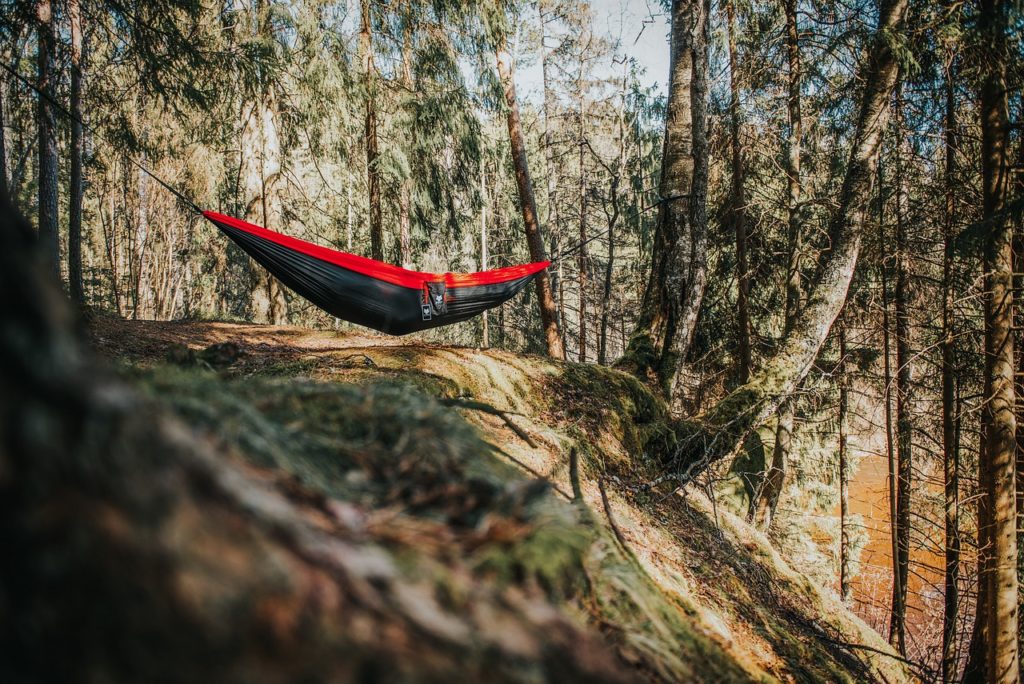For many outdoor enthusiasts, the image of camping conjures up visions of pitching tents and battling with pesky ground critters. But what if there was another way? Enter hammock camping, a unique and lightweight approach to spending the night under the stars.
Why Hammock Camp?
Ditching the tent for a suspended slumber offers a surprising array of benefits:
- Comfort: Imagine gently swaying in the breeze, lulled by the sounds of nature. Hammocks provide excellent back support, eliminating the pressure points often associated with sleeping on the ground.
- Lightweight: Hammock setups are typically lighter than tents, making them ideal for backpackers and thru-hikers seeking to minimize their pack weight.
- Versatility: Unlike tents, which require flat ground, hammocks can be hung between any two sturdy trees, opening up a wider range of camping possibilities.
- Protection: With a proper tarp setup, you’ll be shielded from the elements, and bug nets offer effective protection against pesky insects.
Gearing Up for Success:
While the basic premise is simple, a comfortable and safe hammock camping experience requires specific gear:
- Hammock: Choose one designed for camping, with features like mosquito netting and spreader bars for optimal comfort.
- Suspension System: Opt for durable straps or ropes with strong carabiners to securely hang your hammock.
- Tarp: Protect yourself from rain and wind with a well-sized tarp, configured to provide ample coverage.
- Sleeping System: Depending on the climate, you’ll need an underquilt for insulation from below and a top quilt or sleeping bag for warmth.
- Accessories: Consider a ridgeline for hanging gear, a pillow for comfort, and headlamps for illumination.
Mastering the Hang:
The key to hammock camping bliss lies in proper setup. Here are some essential tips:
- Find suitable trees: Look for healthy trees with sturdy trunks spaced 12-15 feet apart.
- Embrace the angle: Aim for a 30-degree angle between the straps and the trees for optimal comfort and stability.
- Get snug, but not too snug: The hammock should sag slightly when you enter, but not be so tight that you’re banana-shaped.
- Layer up for warmth: Remember, the air circulation beneath you can make it colder than ground-level camping.
Beyond the Basics:
As you gain experience, you can explore advanced techniques like tarp configurations for different weather conditions and experiment with hammocks designed for double occupancy or winter camping.
Hammock camping offers a unique and rewarding way to connect with nature. With careful planning and the right gear, you can experience the comfort, convenience, and unique perspective that sleeping off the ground provides. So, grab your hammock, find some sturdy trees, and swing into your next adventure!
Additional Tips:
- Leave No Trace: Practice responsible camping principles by minimizing your impact on the environment.
- Do your research: Familiarize yourself with the regulations and restrictions of your chosen camping area.
- Start small: If you’re new to hammock camping, try it out in your backyard before heading into the wilderness.
I hope this article has inspired you to give hammock camping a try!

